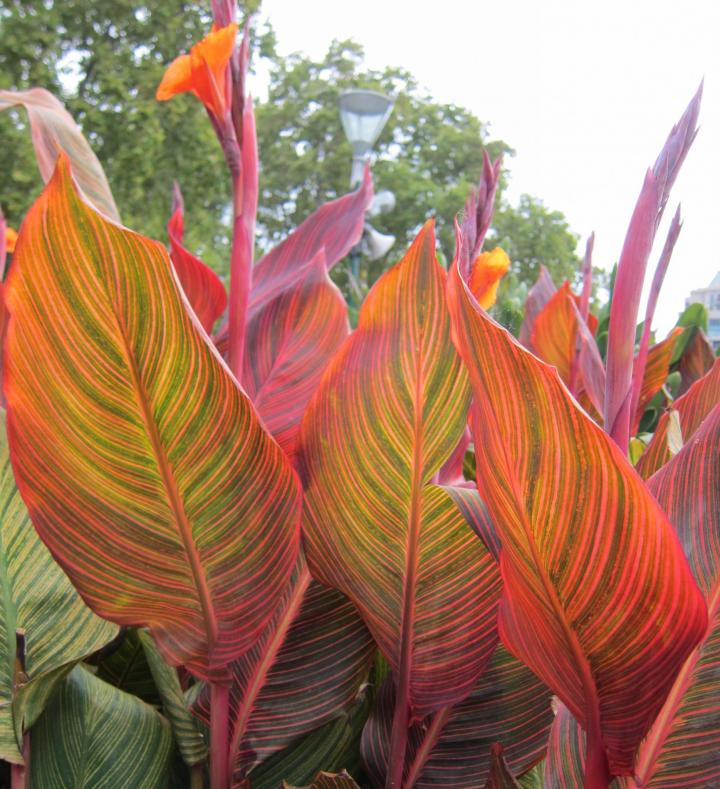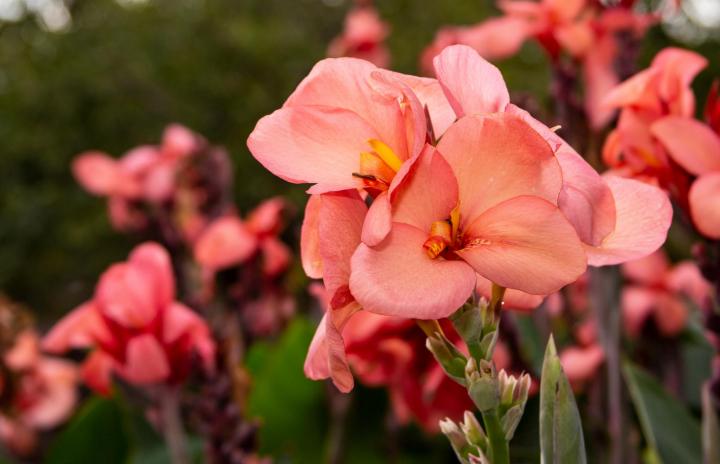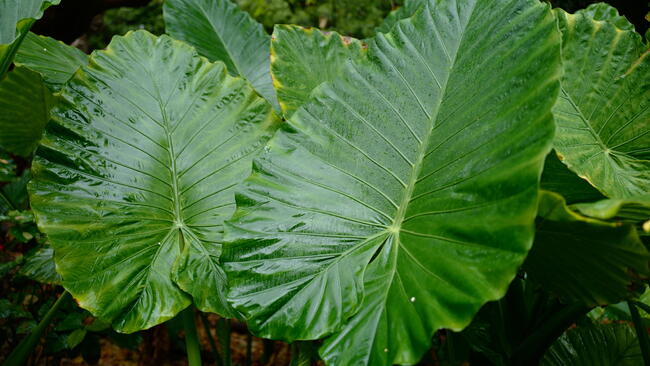
Caption
Canna Tropicanna®: The original Tropicanna, Tropicanna Gold, and Tropicanna Black
Big, Bold, and Beautiful: How to Grow and Care for Canna Lilies
Read Next
Types
- ‘City of Portland’: 4 to 5 feet tall; green foliage with coral-pink flowers
- Ehemann’s canna: 5 to 8 feet tall; green foliage with deep rose-pink flowers
- ’Pretoria’, aka Bengal Tiger: 4 to 6 feet tall; variegated yellow-and-green-striped foliage with orange flowers
- ‘Futurity Red’: 2 to 4 feet tall, on average; burgundy foliage with crimson flowers; self-cleaning (drops spent flowers)
- ‘Toucan Yellow’: 2 1/2 to 4 feet tall; deep green foliage with golden-yellow flowers
- For a tall canna, the Canna Tropicanna® is a popular choice. Growing 4 to 6 feet tall, ‘Tropicanna’ boasts tangerine, iris-like blooms and exotic bronze foliage. Plant in the back of your garden bed or large containers for a dramatic statement on your porch or patio.

- A medium-size gem is ‘Los Angeles’, which has large, deep pink florets and opens out so that you can see the face. Growing 4 to 5 feet tall, this canna blooms from June to August.

As well as medium- to tall-size cannas, you can find smaller “dwarf” sizes and dramatic “giant” sizes!
- Dwarf cannas stand 2 to 4 feet tall and are easy to fit into our downsized modern gardens. The ‘Picasso’ is a real attention-getter with bright yellow flowers and deep red leopard-like spots; it blooms from July to frost. The ‘Wyoming’ has dark burgundy stems and lush orange flowers that bring life to a quiet bed from mid-summer until frost.
- Interested in a giant canna? One of the most popular is the ‘Musifolia’, which grows up to 8 feet! With 3-foot-long red-vein leaves and red blooms, it makes a statement.
Gardening Products
More Like This
Our souces suggest plannting cannas about 4 inches deep, laying them horizontally, with eyes up (if you can find the eyes) in rich, most moisture-retentive soil. Fertlize when you plant with a balanced mix (or per the instructions on the canna packaging) and once a month in the summer.
Some cannas a bog plants and thrive along water banks, other merely desire "wet feet."
Watch for slugs when the shoots emerge. (Could these have already attacked your canna?)
A cottony, fuzzy growth on the rhizomes could be rhizome rot, a fungal disease caused by Sclerotium rolfsii or various species of Fusarium. It can appear in humid, damp conditions.
If you think this is what your rhizomes have, then you can either discard the rhizomes, or perhaps try dipping the rhizomes in a solution of 1 part bleach to 9 parts water (not sure how this will affect growing shoots, though). Dip them just one or two times to try to remove the mold. If they are still moldy, or if they show other signs of disease, such as sunken or mushy or black areas, then discard them. Otherwise, after the dip, dry them with a cloth, and then set them out to dry for a few days in an area above 50 degrees F. You might also separate these plants from others if you grow them outside, just in case they still do have remnants of disease.
When you store them next year, dry them for a few days before storing, and you might try dusting them with an appropriate fungicide (a garden center can advise you about products) to discourage the growth of mold. Don't store in airtight containers; allow adequate air circulation. Keep them dry, dark, and cool, but not freezing.
- « Previous
- 1
- 2
- …
- 10
- Next »










Comments